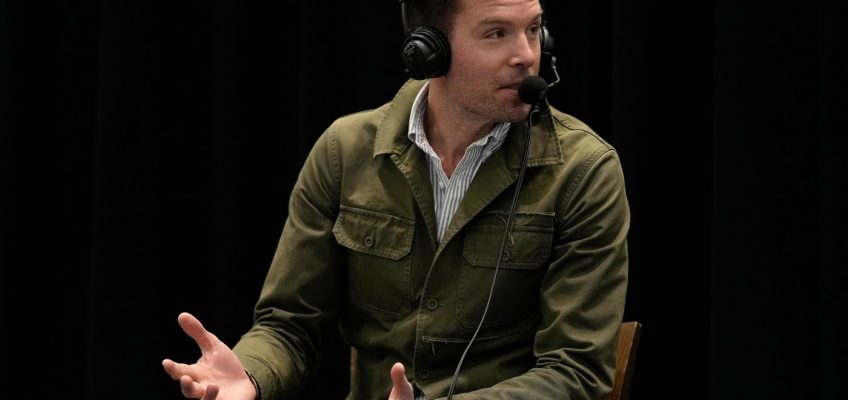By DANICA KIRKA, KWIYEON HA and JILL LAWLESS
MANCHESTER, England (AP) — One of the two Jewish men killed in a car and knife attack on a synagogue in the English city of Manchester appears to have been accidentally shot by a police officer as worshippers tried to stop the attacker entering the building, law enforcement authorities said Friday.
Police said local residents Adrian Daulby, 53, and Melvin Cravitz, 66, died in Thursday’s attack on the Heaton Park Congregation Synagogue on Yom Kippur, the holiest day in the Jewish calendar. Three other people are hospitalized in serious condition.
Police shot and killed a suspect seven minutes after he rammed a car into pedestrians outside the synagogue and then attacked them with a knife in what the police force called an act of terrorism. He wore what appeared to be an explosives belt, which was found to be fake.
Greater Manchester Police chief Stephen Watson said a pathologist has provisionally determined that one of those killed had a gunshot wound. Since the attacker did not have a gun, he said the injury may have been “a tragic and unforeseen consequence” of police actions.
He said one of the hospitalized victims also appears to have been shot.
“It is believed that both victims were close together behind the synagogue door, as worshippers acted bravely to prevent the attacker from gaining entry,” Watson said.
Police have called the attack an act of terrorism but say they are still working to identify a motive. It came amid high tensions over Israel’s war on Hamas in Gaza.
Dozens of people gathered in pouring rain near the synagogue Friday for a vigil, where Deputy Prime Minister David Lammy was heckled by members of the crowd who accused the government of allowing antisemitism to spread.
Chief Rabbi Ephraim Mirvis, the head of Orthodox Judaism in Britain, said the attack was the result of “an unrelenting wave of Jew hatred” on the streets and online.
“This is the day we hoped we would never see, but which deep down, we knew would come,” he wrote on social media.
Attacker was not known to police
Police identified the attacker as Jihad Al-Shamie, a 35-year-old British citizen of Syrian descent who entered the United Kingdom as a young child and became a citizen in 2006. Al-Shamie translates into English as “the Syrian,” and authorities are unsure whether that is his birth name.
Police said the crime is being investigated as a terrorist attack. Home Secretary Shabana Mahmood said the attacker was not previously known to police or to Prevent, a counterterror program that tries to identify people at risk of radicalization.
Related Articles
Trump sets Sunday deadline for Hamas to agree to a deal for ending the war in Gaza
Today in History: October 3, Germany reunifies after 45 years
Cheetah cubs destined for illegal trade in exotic pets rescued in Somaliland
Putin praises Trump but warns that supplies of US long-range missile to Ukraine will badly hurt ties
Study shows the world is far more ablaze now with damaging fires than in the 1980s
Mahmood said “it’s too early to say” whether the attacker acted alone or was part of a cell. Officers arrested two men in their 30s and a woman in her 60s on suspicion of the preparation or commission of acts of terrorism in connection with the attack.
Neighbors of the attacker in the Manchester suburb of Prestwich, a couple of miles (about 3 kilometers) from the synagogue, said Al-Shamie’s family had lived in the house for years. Several described seeing Al-Shamie lifting weights and working out in the backyard.
Geoff Halliwell, who lives nearby, said he appeared to be “a straightforward, ordinary lad.”
A statement on Facebook from the attacker’s family condemned the “heinous act, which targeted peaceful, innocent civilians.
“Our hearts and thoughts are with the victims and their families, and we pray for their strength and comfort,” the statement said.
Religious leaders condemn the attack
Religious and political leaders condemned the attack and pledged to reassure Britain’s Jewish community, which numbers about 300,000.
Police said extra officers would be on the streets of Manchester on Friday and through the weekend.
Prime Minister Keir Starmer, who visited the scene of the attack on Friday morning with his wife Victoria, said “this was a dreadful attack, a terrorist attack to inflict fear. Attacking Jews because they are Jews.
“It’s really important today that the whole country comes together, people of all faiths and no faith, stand in support and solidarity with our Jewish community,” he said.
Anglican bishop Sarah Mullally, who was named Friday as the next leader of the Church of England, said that “hatred and racism of any kind cannot be allowed to tear us apart.”
Recorded antisemitic incidents in the U.K. have risen sharply since Hamas’ Oct. 7, 2023, attack on Israel and Israel’s ensuing war against Hamas according to Community Security Trust, a charity that provides advice and protection for British Jews. More than 1,500 incidents were reported in the first half of the year, the second-highest six-month total reported since the record set over the same period a year earlier.
Calls for pro-Palestinian protests to be canceled
Some politicians and religious leaders claimed pro-Palestinian demonstrations, which have been held regularly since the war in Gaza began, had played a role in spreading hatred of Jews. Some say chants such as “From the river to the sea, Palestine will be free” incite violence. Others, including Jews who support the protests, say they want a ceasefire, an end to the suffering of Palestinians in Gaza and the release of Israeli hostages held by Hamas.
Mirvis, the chief rabbi, urged authorities to “get a grip on these demonstrations. They are dangerous.”
Some British Jews also say the U.K.’s recognition of a Palestinian state this month has emboldened antisemitism — a claim the government rejects. Lammy was interrupted by boos and shouts of “Shame on you” as he addressed the vigil in Manchester.
Lammy told the crowd that “we stand with you against terrorism,” and urged organizers of planned pro-Palestinian demonstrations over the weekend “to stop and to stand back.”
Police in London urged organizers to call off a protest planned for Saturday to oppose the banning of the group Palestine Action, which has been labeled a terrorist organization by the government.
Organizers said they would not cancel the demonstration, where hundreds of people are expected to hold signs supporting the banned group.
“Canceling peaceful protests lets terror win,” the group said in a statement.
Lawless reported from London. Brian Melley and Pan Pylas contributed to this story.




